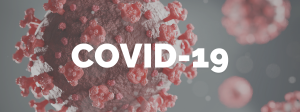
Photodynamic Therapy for Barrett’s Esophagus
High Grade Dysplasia Barrett’s Esophagus
You are at risk of developing Barrett’s esophagus if you have chronic acid reflux disease, also known as GERD. It is estimated that 5% to 20% of people who have chronic acid reflux also have Barrett’s esophagus.1 However, it is important to note that people who do not have GERD might also develop Barrett’s esophagus and the exact cause of this disease is unknown.
Barrett’s Esophagus involves the disruption of the esophagus lining. Unlike the stomach, the lining of the esophagus is not acid-resistant. If you have chronic acid reflux, it might lead to permanent damage of the esophagus. As the esophagus heals over time, a different type of lining replaces the damaged areas. This abnormal lining in the esophagus is more like the lining in the stomach or intestine. The most severe form of Barrett’s esophagus is High-Grade Dysplasia, or HGD. If left untreated HGD may progress to cancer.
What are the symptoms of Barrett’s esophagus?
The earlier stages of Barrett’s esophagus often do not produce any specific symptoms. However, you may experience signs sometimes associated with acid reflux, including:
- heartburn
- food coming up with a burp
- stomach ache
- pain when swallowing
- excess belching
- hoarse voice
- sore throat
- coughing
- shortness of breath
- wheezing
- in the later stages of Barrett’s esophagus there may be difficulty swallowing solids or liquids.
The longer you have experienced acid reflux, the more likely the lining of your esophagus has started to change. Therefore, it is very important to report chronic acid reflux symptoms to your doctor so he or she can put preventative measures in place.
Until recently, the only viable treatment for HGD was surgery to remove part of, or the entire, esophagus. Although the chances for successful surgery are favourable, there are risks associated with this option. Some complications may include longer hospital stays, extended pain, and possible long-term digestive problems.
For those diagnosed with HGD a new, minimally invasive, treatment option called Photodynamic Therapy or PDT is now available in Canada. PDT does not involve incisions and is administered on an outpatient basis. In many cases, PDT may not require anesthesia.
Here is how PDT works. It begins with an injection of medicine called Photofrin® (porfimer sodium) that makes your body sensitive to bright light and direct sunlight. Within two days most of the medicine leaves the surrounding healthy esophageal lining, but stays in the abnormal lining longer. Approximately 48 hours after the injection a small balloon catheter with a thin fibre optic diffuser is inserted into your esophagus. The fibre optic diffuser delivers a special non-thermal, red laser light to the affected area. The light activates the photosensitive drug and starts a process that destroys the abnormal Barrett’s esophagus lining called HGD.
The main adverse reaction to PDT is light sensitivity. Patients remain light sensitive for approximately 30 days, in rare cases as much as 90 days. If you choose PDT, your doctor will inform you of other precautions or concerns.















